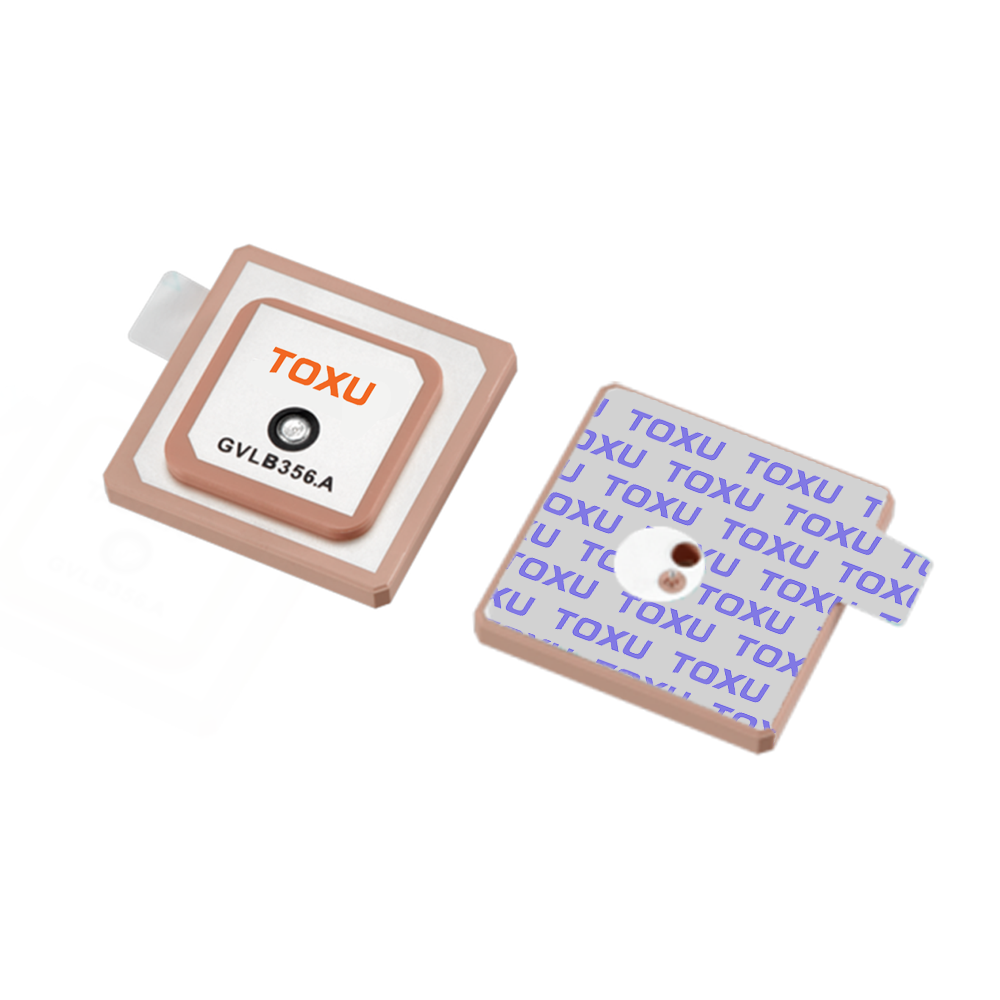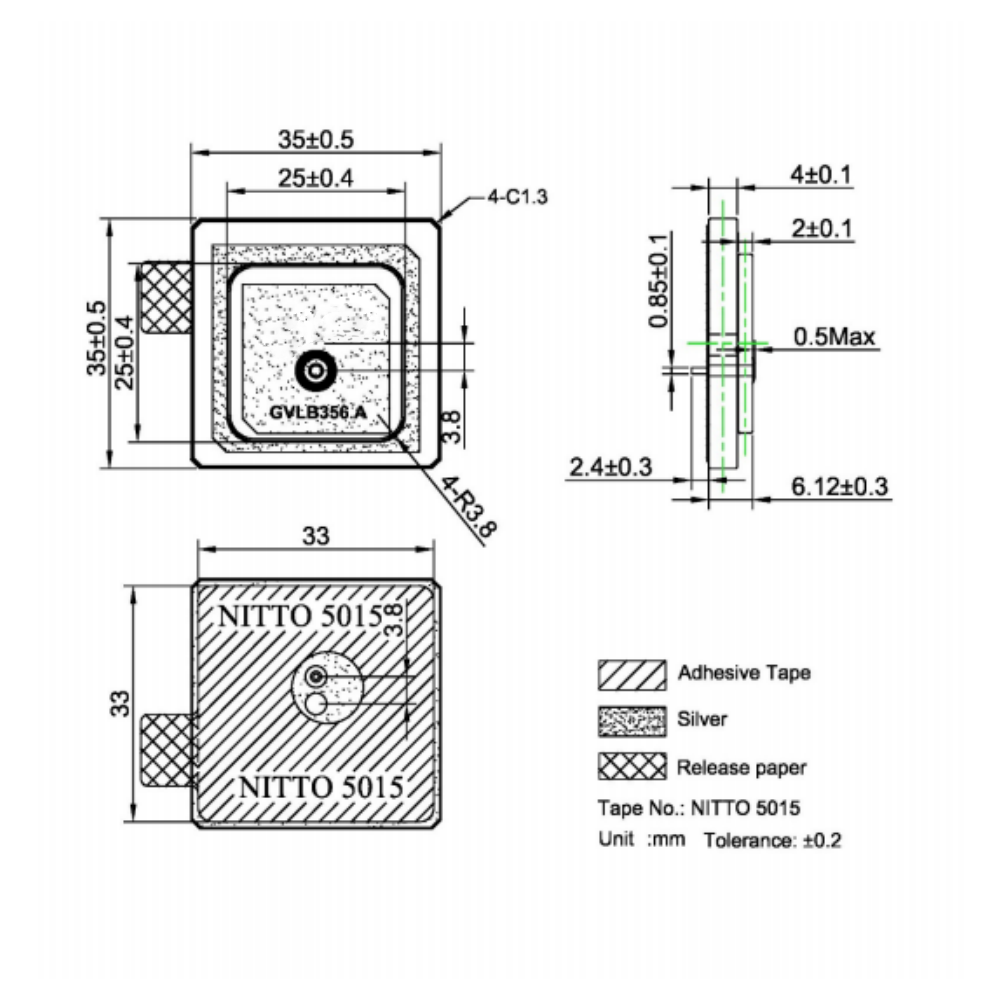The integrated GNSS ceramic antenna is a versatile workhorse whose applications span from the mundane to the mission-critical. Its evolution is continuously driven by the demands of new technologies and the ever-increasing need for higher precision and reliability.
Applications:
Consumer Electronics: The highest volume market.
Smartphones and Tablets: Essential for navigation, location-based services (LBS), geotagging, and emergency services (E911).
Wearable Devices: Fitness trackers and smartwatches for activity tracking (running, cycling, hiking).
Personal Navigation Devices (PNDs): The original mass-market driver for this technology.
Cameras and Drones: For geotagging photos and providing essential navigation and stabilization for Unmanned Aerial Vehicles (UAVs).
Automotive and Telematics:
Telematics Control Units (TCUs): For emergency call systems (eCall), stolen vehicle tracking, and usage-based insurance (UBI).
Advanced Driver-Assistance Systems (ADAS): Provides absolute positioning data that is fused with camera, radar, and lidar data for features like lane-keeping and adaptive cruise control.
Autonomous Vehicles: A critical sensor for localization, requiring high-integrity, multi-band GNSS antennas.
In-Vehicle Infotainment (IVI): For built-in navigation systems.
Industrial and Internet of Things (IoT):
Asset Tracking: Modules for tracking containers, trailers, and high-value assets across global supply chains.
Fleet Management: Devices for monitoring the location and efficiency of commercial trucking fleets.
Precision Agriculture: Guiding tractors for automated planting and harvesting with centimeter-level accuracy (using RTK correction).
Surveying and Construction: High-precision receivers used for mapping and machine control.
Timing and Synchronization: Providing precise Coordinated Universal Time (UTC) for telecommunications networks (e.g., 5G base stations) and power grids.
Marine and Aviation:
Recreational Marine: Chartplotters and fishfinders.
General Aviation: As a primary or backup navigation source.
Future Trends:
Multi-Band/Multi-Constellation Operation: The future is about leveraging all signals from all available constellations (GPS, Galileo, GLONASS, BeiDou, etc.) across multiple frequency bands (L1, L2, L5, E6). The L5 band, in particular, offers higher power and advanced civilian codes, enabling faster acquisition and more robust performance. Antennas will need to be wideband or have multiple resonators to cover these bands efficiently.
Demand for High-Precision: Technologies like Real-Time Kinematic (RTK) and Precise Point Positioning (PPP) are moving from niche survey applications into mass markets like automotive, robotics, and agriculture. This demands antennas with extremely stable Phase Center—the electrical point from which radiation appears to emanate. Any variation in this point with signal angle or frequency introduces measurable errors in precision positioning. Future designs will focus on maximizing phase center stability and uniformity.
Advanced Interference and Jamming Mitigation: The RF environment is becoming increasingly crowded and hostile. Future antennas will incorporate more sophisticated filtering techniques and may even feature adaptive nulling capabilities, where the antenna pattern can actively form a null in the direction of a jamming signal to maintain operation.
Tighter Integration (Antenna-in-Package): The trend is towards further integration. The next step is to co-package the GNSS antenna directly with the RF front-end and the GNSS system-on-chip (SoC) into a single module, creating a complete "GNSS engine" that simplifies design for device manufacturers.
Hybridization and Sensor Fusion: The GNSS antenna will not work in isolation. It will be part of a fused data suite that includes inertial measurement units (IMUs), cellular modems, UWB radios, and cameras to provide continuous and resilient positioning, especially in GNSS-denied environments like urban canyons and indoors.
Resilience for Safety-Critical Systems: For autonomous driving (AV) and urban air mobility (UAM), functional safety and integrity are paramount. Antennas will need features for self-monitoring, fault detection, and assurance that the signals being received are authentic and not malicious spoofing attacks.
The integrated ceramic patch antenna is thus a dynamically evolving technology, continuously adapting to meet the demands for greater precision, robustness, and integration in an increasingly connected and automated world.
Conclusion
The integrated GNSS ceramic antenna is a paradigm of successful technological translation. It represents the culmination of a journey from a theoretical electromagnetic structure to a highly refined, mass-produced commodity that is fundamental to the global economy. Its development is a story of overcoming fundamental physical constraints—namely the relationship between wavelength, size, and efficiency—through innovative materials science and clever electronic integration.
Its core value proposition remains unshaken: it provides the most effective means to miniaturize a high-performance GNSS front-end into a form factor that is compatible with the sleek, consumer-oriented devices that define the modern era. The decision to integrate a low-noise amplifier and filtering directly within the antenna package was a masterstroke, solving the critical problem of signal degradation before it even reaches the receiver and simplifying the design process for countless product engineers. This has democratized access to reliable satellite positioning, empowering a revolution in location-based services, personal navigation, and asset tracking.
However, as with all engineered solutions, it is defined by its compromises. The pursuit of miniaturization via high-dielectric ceramics inherently limits bandwidth and creates a dependence on the installation environment. These are not mere drawbacks but rather defining parameters that shape how the technology is used and advanced. The ongoing research and development in this field are directly focused on pushing these boundaries: developing new ceramic composites for wider bandwidth, creating novel structures for stable multi-band operation, and integrating smarter features for interference mitigation.
In the grand architecture of a GNSS receiver, the antenna is the gateway. It is the first and most critical link in the chain. The integrated ceramic patch antenna has proven to be an exceptionally reliable, robust, and efficient gateway for a generation of devices. As we stand on the brink of a new era of autonomy—with self-driving cars, intelligent drones, and pervasive IoT—the demands on this humble component will only grow. Its ability to evolve, providing ever-higher levels of precision, integrity, and resilience, will be a key enabler for these future technologies. The integrated ceramic patch antenna, therefore, is far more than a simple component; it is a foundational technology that has quietly helped build our location-aware world and will continue to be a critical enabler for the intelligent systems of tomorrow.




































































 Language
Language
 En
En Cn
Cn Korean
Korean

 Home >
Home > 







 18665803017 (Macro)
18665803017 (Macro)













